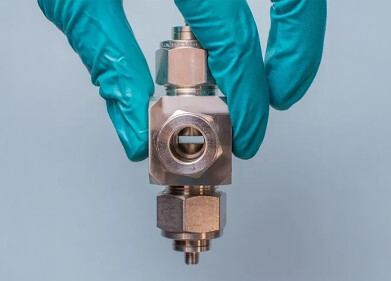Analytical Instrumentation
How Are Oil and Gas Companies Tracking Methane?
Sep 29 2020
In a bid to curb methane emissions that seep into the atmosphere, US oil and gas companies are spending millions of dollars on state-of-the-art technology designed to capture the chemical compound. While the Trump administration is loosening restrictions and making it easier for companies to increase emissions, giants such as Exxon Mobil are under pressure to take responsibility for their environmental footprints.
To monitor greenhouse gas emissions companies like Exxon Mobil are leveraging next-generation methane detection technologies, including hand-held monitors, sensor equipped drones and satellite-mounted scanners. Daniel Zimmerle, director of the methane emissions program at Colorado State University says investing in new technologies will play an important role in capturing the greenhouse gas and combating climate change.
Helicopters, planes and drones take to the skies
Currently, the EPA estimates around 570 million metric tons of methane is released into the atmosphere every year. Around 60% comes from humans, while the remaining 40% is from natural sources. Of the 60% produced by humans, roughly 28% is linked to the oil and gas industry.
While methane regulations have recently been relaxed, many oil and gas majors are under pressure to address climate change concerns and reduce methane emissions. Exxon Mobil is spearheading the movement and recently invested in a fleet of laser-powered sensors carried by helicopters and light aircraft. The company is also launching drone-mounted sensors to detect methane emissions across hundreds of its oil and gas sites, including major projects in New Mexico and Texas.
Just over two years ago Denver-based company Jonah Energy launched a drone-powered methane detection program designed to monitor emissions in Wyoming. The project was an instant success and helped oil and gas companies track and repair methane leaks. “Utilising a drone platform with a forward-looking infrared camera on it helps us continually reduce emissions,” says Paul Ulrich, vice president of regulatory affairs at Jonah Energy.
BP launches satellite-powered technology
BP has also embraced methane tracking technology, investing US$5 million in a cloud-based software suite called Satelytics. Using imagery from satellites, UAV, planes and fixed cameras, the software calculates emissions and tracks environmental changes, including variations in soil and water salinity.
Other companies such as aerial intelligence start-up SeekOps are pairing airborne sensors with advanced data analytics. “Sensitivity is a big selling point and the efficiency with which we can conduct surveys,” says Andrew Aubrey, CEO and co-founder at SeekOps. The company recently launched an ultra-lightweight methane sensor that can be mounted on a small drone yet is sensitive enough to detect gas leaks in the parts-per-billion range.
Empowering the world with data
Some companies are even turning to space, with Montreal-based company GHGSat recently launching a high-resolution satellite capable of measuring greenhouse gas emissions at industrial sites across the globe. For company founder Stephane Germain, empowering non-government organisations such as the Environmental Defense Fund with the technology to track methane emissions data will play a critical role in combating climate change and protecting the planet from contamination. Want to know more about how technology is revolutionising the energy industry? Don’t miss ‘Digitalisation Transforms Refinery Emissions Monitoring and Combustion Control Gas Analysis’ with insight from Stephen B Harrison on behalf of ABB Measurement & Analytics.
Digital Edition
PIN 25.5 Oct/Nov 2024
November 2024
Analytical Instrumentation - Picturing Viscosity – How Can a Viscometer or a Rheometer Benefit You? - Sustainable Grease Formulations: Evaluating Key Performance Parameters and Testing Method...
View all digital editions
Events
Nov 27 2024 Istanbul, Turkey
Biogas Convention & Trade Fair 2024
Nov 27 2024 Hanover, Germany
Dec 03 2024 Dusseldorf, Germany
Dec 08 2024 Anaheim, CA, USA
Turkey & Black Sea Oil and Gas
Dec 11 2024 Istanbul, Turkey



















